 Narrowsburg
NarrowsburgLight Rain Fog/Mist, 43°
Wind: 8.1 mph
 Narrowsburg
NarrowsburgWhile preparing to visit with artist Allan Rubin and discuss his newest exhibit, “Canon,” I did some research online on the meaning of “artist.” The first definition I found …
Stay informed about your community and support local independent journalism.
Subscribe to The River Reporter today. click here
This item is available in full to subscribers.
Please log in to continue |
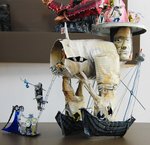
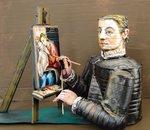
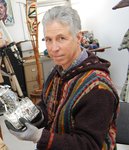
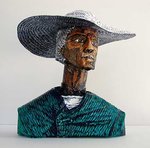
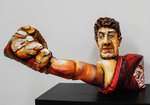
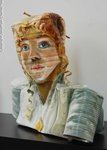
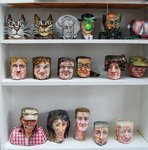
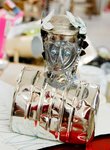

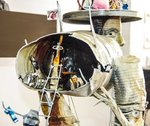
While preparing to visit with artist Allan Rubin and discuss his newest exhibit, “Canon,” I did some research online on the meaning of “artist.” The first definition I found was: “A person who practices one of the fine arts, especially a painter or sculptor. A second page said, “A person whose trade or profession requires knowledge of design, drawing and painting.” A third came up with “A person who produces paintings or drawings or sculpture as a profession.” The last page provided a handy list of synonyms like “designer,” “creator,” “originator” and “producer.” Interestingly, Allan Rubin is all of those things.
The exhibit, which opens on Friday, April 6 at the Delaware Valley Arts Alliance (DVAA), is the culmination of an 18-month-long explosion of creativity sparked, according to Rubin, by gallery director Rocky Pinciotti’s annual Art in Sixes show at the DVAA.
“I had begun experimenting with painting on recycled metal food cans,” Rubin explained as we toured his studio last month, “and had already created a few, which led me to painting small portraits of friends. But I was afraid that I would run out of friends pretty quickly,” he said, laughing, “so I tried my hand at portraying an artist whom I admired. And while in the process of emulating a Picasso self-portrait, I had an epiphany.” It occurred to Rubin that he could use self-portraits of great masters as the subjects for his series, and that using metal cans as his material would allow him to scale down from the large canvas and branches sculptures he had done in the past—and have a much easier time finding space for the pieces in his studio.
Thinking that oil painting on cans was a “great medium,” but unable to find any other artists experimenting with a similar technique, Rubin dove into exploring how he could portray more of the painters that he had studied over the years. “As a student, I learned from the great masters, but it’s never too late to express one’s admiration by creating homages. There are so many influential great masters that it’s almost unlimited source material.” The painted sculptures are both whimsical and respectful, which Rubin is quick to point out. “They look so much like the [original] self-portraits” he says, “but they are made out of cans!”
And therein lies some of the genius behind this impressive collection. What might have started with simple soup cans has evolved into Rubin fashioning tin cans of every shape and size into three-dimensional shapes including arms, torsos, heads and clothing. He is always on the lookout for unusual shapes, like film canisters and cookie tins. “See this hat?” he asks, pointing to his painted tin sculpture of artist Elizabeth Catlett in the collection. “It started out as a Jello mold—cool, right?”
With close to 50 pieces in the show, Rubin has explored the self-portraiture of familiar names like Rembrandt, Van Gogh, Degas and Hireronymus Bosch, but has also found a way to shed new light on some of the lesser-known women. “When I was a student in the late 1960s,” he says, “my art history textbook did not include a single female painter, of which there were many. I’m trying to remedy that through this work.” Summing up this collection, Rubin became introspective. “While not all artists can be included in the canon,” he said, “all artists are part of the creation process by being included in the vast organism that is the art world itself.”
One thing included in the new exhibit is a short film on Allan’s process, which is riveting. From concept to design to execution, the video takes the casual observer on a tour of Rubin’s creative journey and is an informative, educational and just plain fascinating look at how a true master works.
While this Friday’s reception might provide an opportunity to glimpse the artist himself, my advice would be to tour the gallery at one’s leisure, check out the video and give yourself enough time to really soak it all in, for “Canon” is truly inspired. The DVAA is located at 37 Main St. in Narrowsburg, NY. For more images of this collection, follow Rubin on Instagram at allanrubin12 or visit www.Facebook.com/pg/AllanRubinArt to see Rubin’s pieces paired with the original works of art.
Comments
No comments on this item Please log in to comment by clicking here